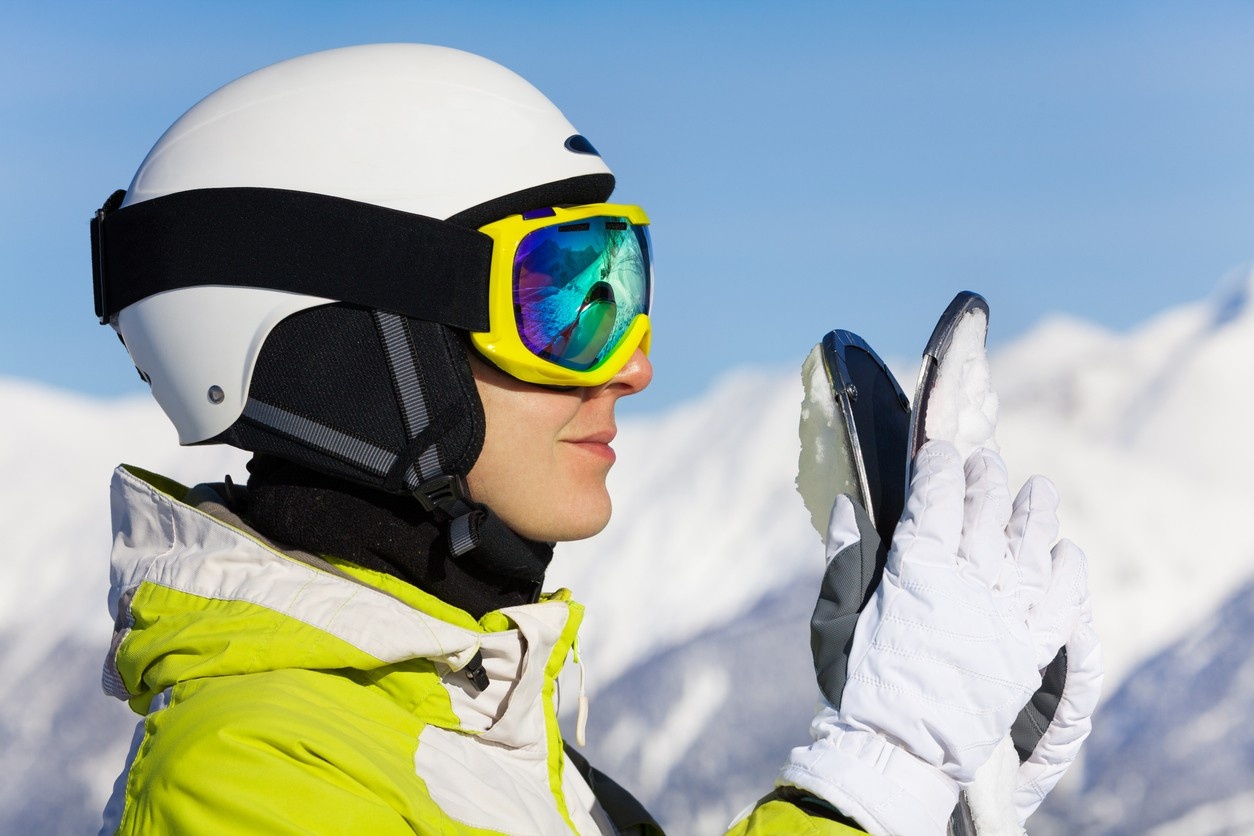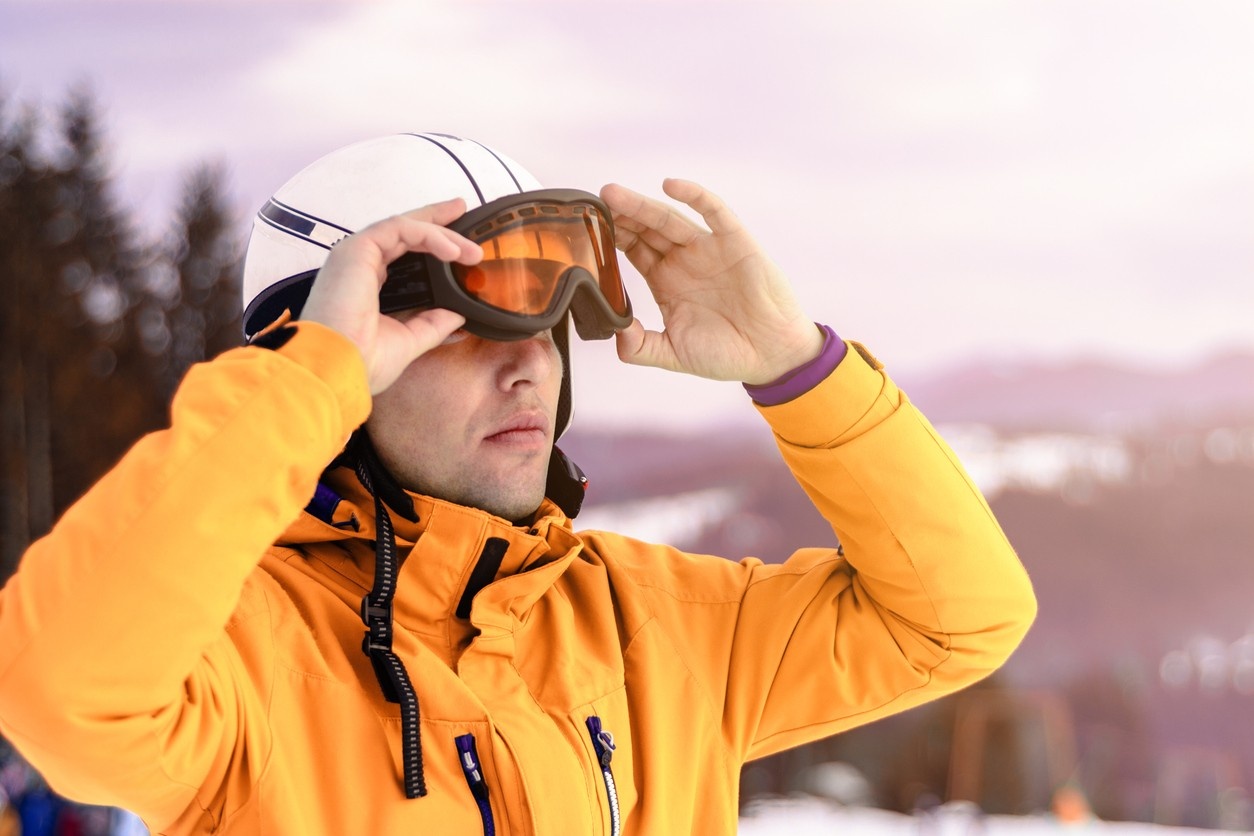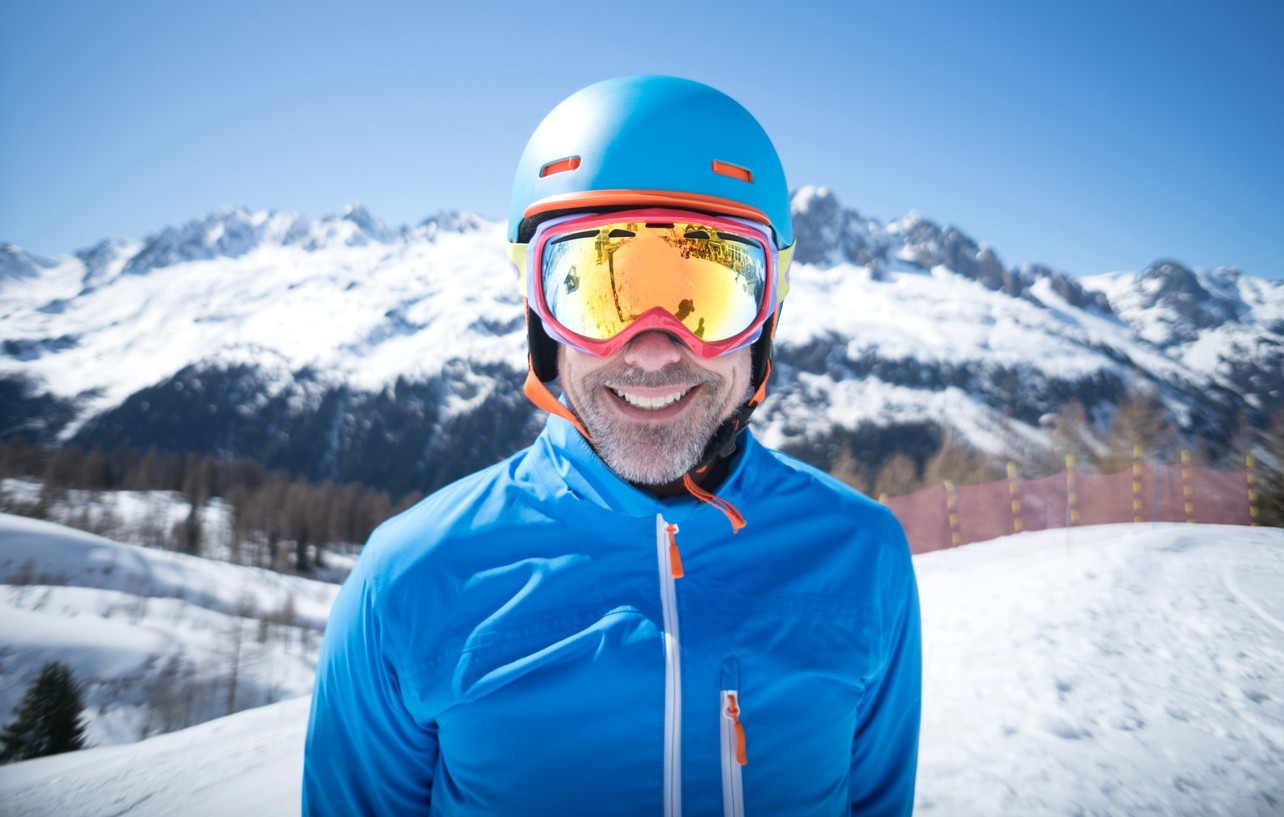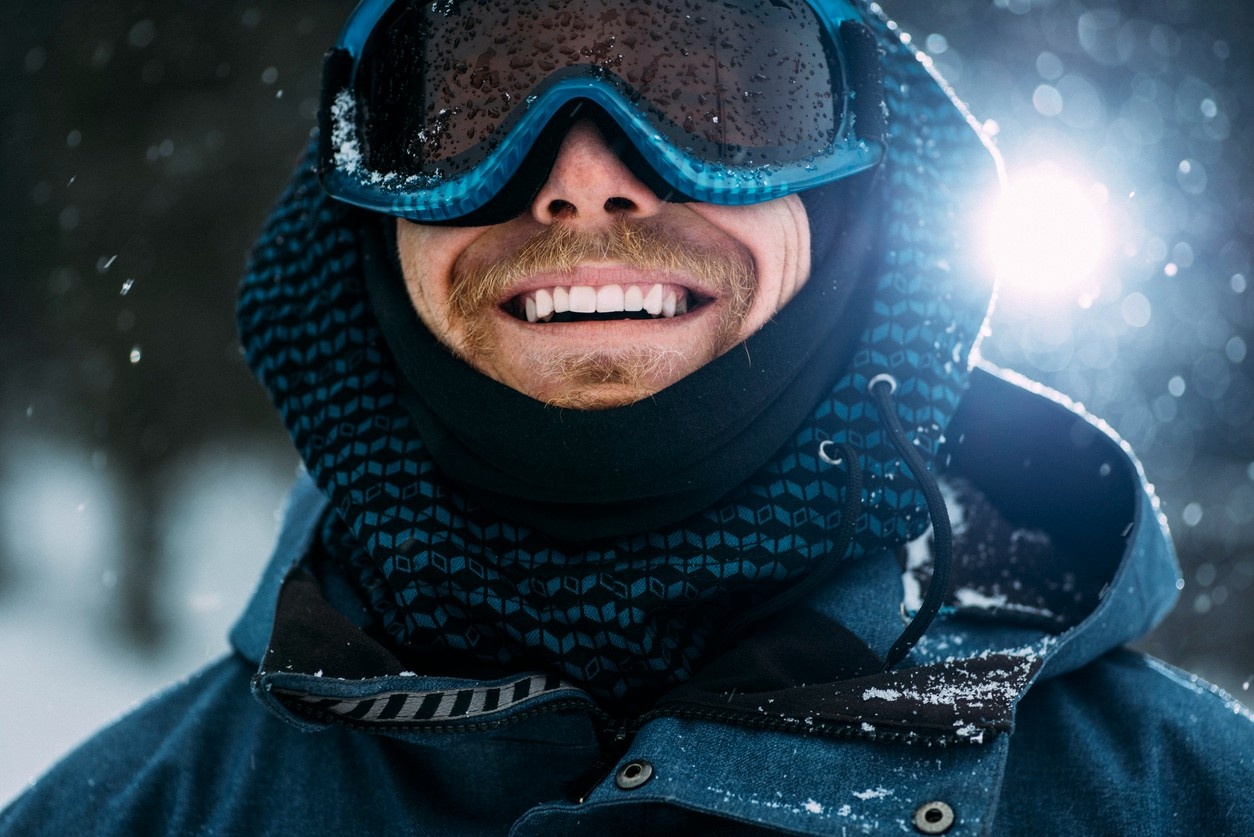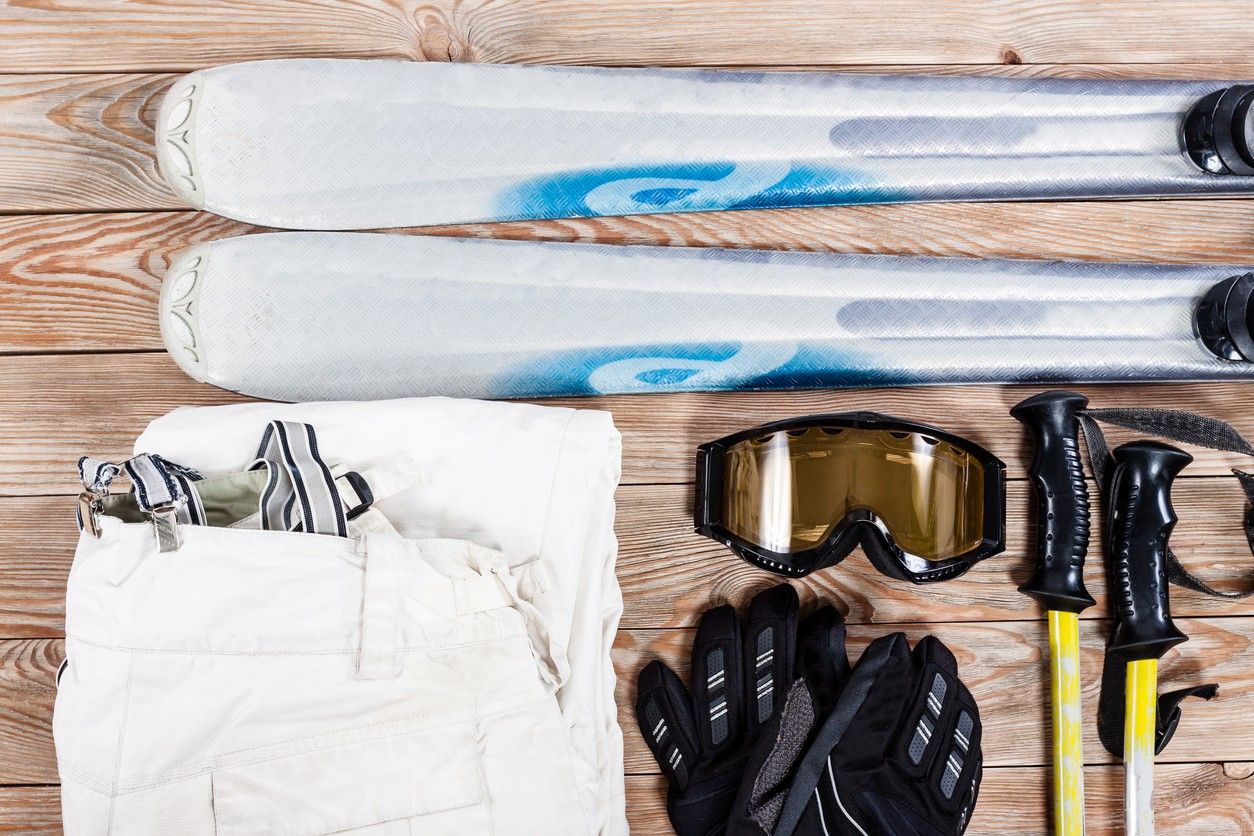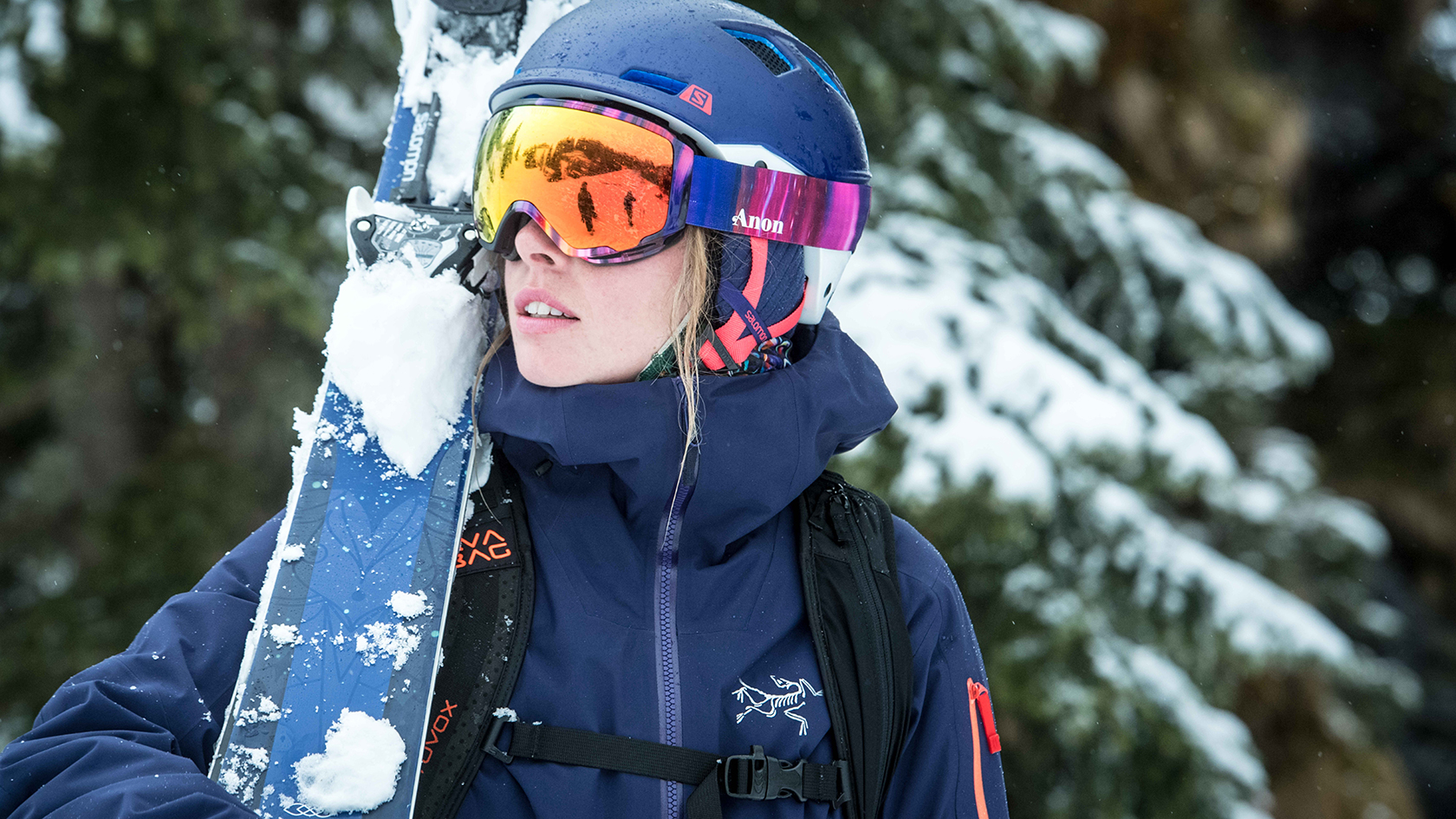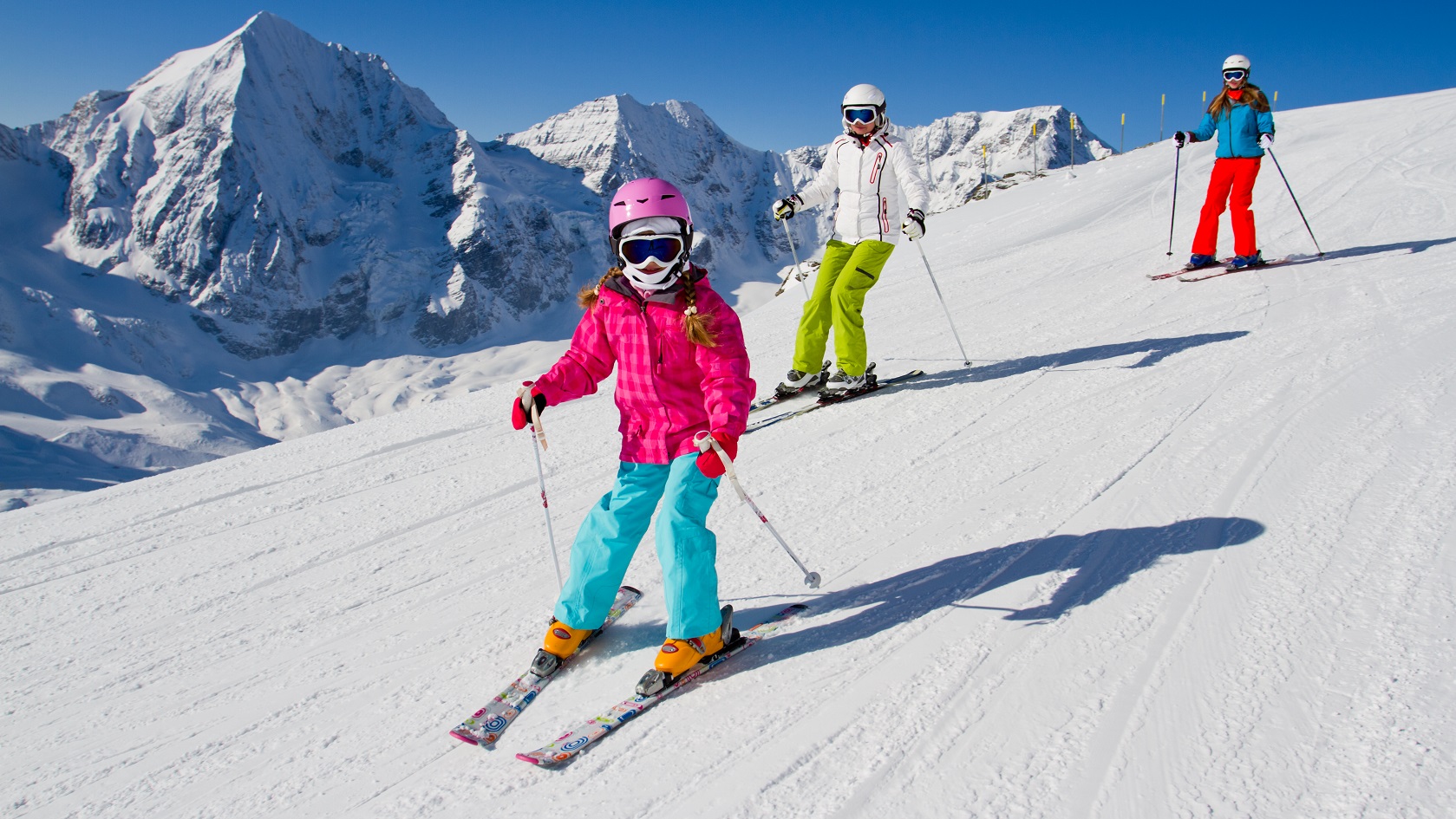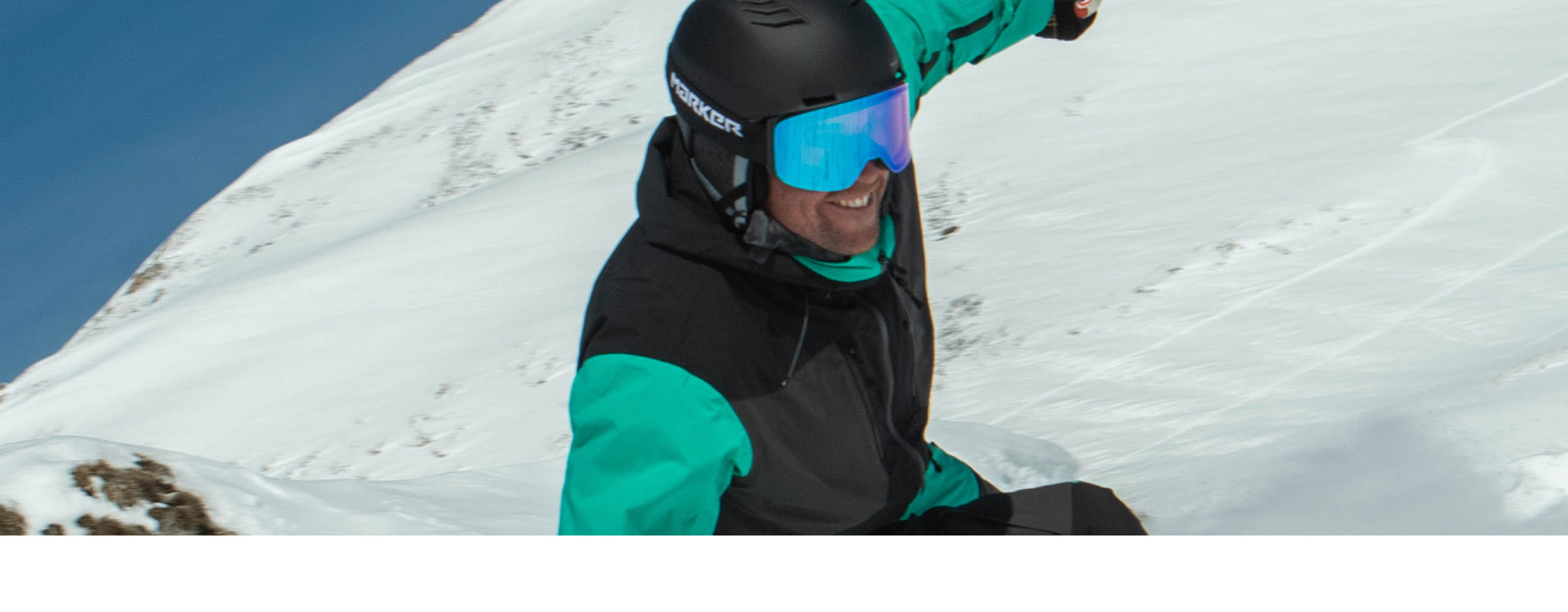Ski goggles are more than just a fashionable accessory (although they can certainly elevate your slope-style game); they serve a vital role in shielding your eyes from the harsh mountain elements and enhancing your visibility on the trails. But with so many different styles, features, and technologies to choose from, finding the perfect pair of goggles can feel like navigating a mogul field in a whiteout. Do you go for the classic cylindrical lens or the cutting-edge spherical design? Should you prioritise anti-fog coatings or quick-change lens systems? And what about all those fancy tints and mirror finishes – are they just for show, or do they actually serve a purpose?
Fear not, intrepid adventurer, because we've got your back. In this comprehensive guide, we'll take you on a deep dive into the world of ski goggles, exploring everything from the basics of lens shapes and materials to the most advanced technologies and features that are revolutionising the way we see the mountain. We'll help you understand the science behind the different lens tints and coatings, and we'll give you the inside scoop on the brands and models that are pushing the boundaries of goggle innovation. But we're not just here to geek out about the technical specs and the latest gadgets. We're here to help you find the perfect pair of goggles for your unique needs and preferences, whether you're a seasoned pro or a first-time shredder.
The Importance of Wearing Ski Goggles
You might be thinking, "Are ski goggles really necessary? Can't I just wear my everyday sunglasses?" While sunglasses offer some protection from the sun's rays, they simply can't match the comprehensive benefits provided by ski goggles. Here are the primary reasons why you should always choose goggles when hitting the slopes:
Protection from UV Rays and Glare
At high altitudes, the sun's UV rays are significantly more intense, capable of causing damage to your eyes' delicate structures, such as the cornea and conjunctiva. Snow reflects up to 85% of UV radiation, even on cloudy days, making eye protection crucial. Prolonged exposure to UV rays without proper protection can lead to painful conditions like photokeratitis, also known as snow blindness. Ski goggles provide 100% UV protection, shielding your eyes from these harmful rays.
Additionally, the glare from the sun reflecting off the snow can cause eye strain, fatigue, and headaches. Ski goggles with the right lens tint and technology can reduce glare, enhancing visual comfort and allowing you to enjoy your time on the mountain without discomfort. Look for goggles with polarised lenses, which are designed to filter out horizontal light waves that cause glare, providing clearer vision and reduced eye strain.
Improved Visibility in Varying Conditions
The mountain environment can be unpredictable, with changing light conditions, fog, and snow affecting your ability to perceive the terrain. Flat light, caused by overcast skies, can make it difficult to discern bumps, dips, and icy patches, increasing the risk of falls and injuries. Ski goggles with lenses designed for specific conditions can dramatically improve your visibility, allowing you to see the terrain more clearly and react accordingly.
For example, goggles with yellow, amber, or rose-tinted lenses enhance contrast and depth perception in overcast or low-light conditions, making it easier to see the contours of the snow. On bright, sunny days, darker lenses like brown, grey, or green can reduce glare and provide a more comfortable viewing experience. Some high-end goggles even feature photochromic lenses that automatically adjust their tint based on ambient light conditions, ensuring optimal visibility in any weather.
Defence Against the Elements
Skiing and snowboarding expose you to cold temperatures, wind, snow, and rain, which can be uncomfortable and even painful for your eyes. When you're racing down the slopes, the wind can cause your eyes to water, blurring your vision. Ski goggles create a protective barrier around your eyes, shielding them from the elements and allowing you to focus on your descent.
Look for goggles with a well-designed ventilation system that promotes airflow and reduces fogging. Many modern goggles feature dual-lens constructions with anti-fog coatings on the inner lens, which help prevent moisture buildup and maintain clear vision. Some high-end models even incorporate battery-powered fans or heated lenses to actively combat fogging in challenging conditions.
Impact Protection
The mountain environment is full of potential hazards, from tree branches and rocks to other skiers and snowboarders. In the event of a collision or fall, ski goggles provide a layer of impact protection for your eyes, reducing the risk of injury from foreign objects. High-quality goggles are constructed with durable, shatter-resistant materials like polycarbonate or Trivex, which can withstand significant impacts without breaking. Some models even feature additional safety technologies, such as outriggers that extend the frame's coverage to protect the temples and sides of the head.
Lens Materials: The Building Blocks of Clear Vision
The lenses are the heart and soul of your ski goggles, responsible for providing clear, distortion-free vision and protection from the elements. There are two primary materials used in goggle lenses:
Polycarbonate
Polycarbonate is a lightweight, impact-resistant plastic that has become the most common material used in ski goggle lenses. It offers excellent optical clarity, durability, and protection from UV rays. Polycarbonate lenses are highly resistant to shattering and can withstand the rigours of the mountain environment. One of the main advantages of polycarbonate lenses is their ability to be easily moulded into various shapes and curvatures, allowing for the creation of spherical and cylindrical lens designs. Additionally, polycarbonate lenses can be treated with various coatings, such as anti-fog, anti-scratch, and mirror finishes, to enhance their performance and durability.
Mineral Glass
In the past, ski goggle lenses were made from mineral glass, which offers exceptional optical clarity and scratch resistance. However, mineral glass is heavier and more prone to shattering than polycarbonate, making it less popular in modern ski goggles. Some high-end goggles still use mineral glass lenses for their superior optical properties, but they often come with a higher price tag. Mineral glass lenses are known for their excellent light transmission and minimal distortion, providing a clear and accurate view of the terrain. They are also more resistant to scratches than polycarbonate lenses, which can be important for skiers and snowboarders who frequently encounter branches, ice, and other abrasive elements on the slopes.
NXT Glass
NXT glass, also known as Trivex, is a relatively new material in the world of ski goggle lenses. It combines the best qualities of polycarbonate and mineral glass, offering exceptional clarity, impact resistance, and lightweight performance. NXT glass is made from a urethane-based pre-polymer that is cured and then injection moulded, resulting in a lens that is clearer than polycarbonate and nearly as light. One of the main advantages of NXT glass is its superior optical clarity compared to polycarbonate. NXT lenses have a higher Abbe value, which means they produce less chromatic aberration and colour distortion, resulting in a clearer, more natural view of the terrain. They are also more resistant to scratches and impacts than polycarbonate lenses, making them a durable choice for aggressive skiers and snowboarders
Lens Shapes: Cylindrical vs. Spherical
Ski goggle lenses come in two primary shapes, each with its benefits and drawbacks:
Cylindrical Lenses
Cylindrical lenses are curved horizontally but flat vertically, giving them a more traditional, retro-inspired look. They offer a wide field of view and are generally less expensive than spherical lenses. However, cylindrical lenses may cause some optical distortion and provide less peripheral vision than their spherical counterparts. One of the main advantages of cylindrical lenses is their lower profile, which can be more comfortable for some face shapes and provide a better fit with certain helmet designs. They also tend to have a more classic, understated appearance that appeals to skiers and snowboarders who prefer a more traditional style.
Spherical Lenses
Spherical lenses are curved both horizontally and vertically, resembling a bubble-like shape. This design offers several advantages, including:
- Reduced optical distortion, providing a clearer, more natural view
- Enhanced peripheral vision, allowing you to see more of your surroundings
- Improved ventilation and reduced fogging, thanks to the increased volume inside the goggles
Spherical lenses are often found on higher-end goggles and are preferred by many skiers and snowboarders for their superior optical performance and modern aesthetics. The increased space between the lens and your face also allows for better air circulation, which can help reduce fogging in challenging conditions.
Some manufacturers have even developed hybrid lens shapes that combine the benefits of cylindrical and spherical designs. These lenses, often referred to as "toric" or "cylindrical-spherical," offer a balance of optical clarity, peripheral vision, and style.
Lens Tints and Visible Light Transmission (VLT)
Ski goggle lenses come in a variety of tints, each designed for specific light conditions. The amount of light that passes through a lens is measured by its Visible Light Transmission (VLT) percentage. Here's a breakdown of common lens tints and their ideal conditions:
- Clear (80-100% VLT) — Best for low-light conditions, such as night skiing or heavily overcast days
- Yellow, Gold, Amber (60-80% VLT) — Ideal for overcast or partly cloudy days, enhancing contrast and depth perception
- Rose, Red, Vermillion (35-60% VLT) — Versatile tints that work well in a range of conditions, from partly cloudy to bright sun
- Dark Gray, Green, and Brown (10-35% VLT) — Perfect for bright, sunny days, reducing glare and eye strain
- Mirrored (5-20% VLT) — Ideal for extremely bright conditions, reflecting light and reducing glare
Many ski goggles now offer interchangeable lenses, allowing you to swap out lenses based on the current conditions for optimal visibility.
Cutting-Edge Goggle Technologies
Ski goggle technology has advanced by leaps and bounds in recent years, with manufacturers constantly pushing the boundaries to develop innovative features that enhance performance, comfort, and convenience on the slopes. From lenses that automatically adapt to changing light conditions to futuristic heads-up displays, the world of ski goggles is brimming with exciting advancements. Let's take a closer look at some of the most notable cutting-edge technologies that are revolutionising the way we see the mountain:
Photochromic Lenses: The Chameleons of the Slopes
Photochromic ski goggles automatically adjust their tint based on the ambient light conditions. These high-tech lenses are made with special photochromic dyes that react to UV light, causing them to darken in bright sunlight and lighten in overcast or low-light situations. The beauty of photochromic lenses is that they provide the perfect level of tint for any given light condition, without the need to manually swap out lenses. This means you can confidently hit the slopes in the morning, knowing that your goggles will automatically adapt as the day progresses and the light changes. Whether you're carving through sun-drenched powder or navigating a fog-shrouded tree line, photochromic lenses ensure that you always have the best possible visibility.
One thing to keep in mind, however, is that the transition from light to dark (and vice versa) isn't instantaneous. It typically takes between 30 and 50 seconds for photochromic lenses to fully adjust, so if you're constantly darting in and out of shadows or dealing with rapidly changing light conditions, you might experience brief moments of less-than-optimal visibility. That said, for most skiers and snowboarders, the convenience and adaptability of photochromic lenses far outweigh this minor drawback.
Polarised Lenses: Glare-Busting Vision Enhancers
If you've ever found yourself squinting against the blinding glare of the sun reflecting off a snow-covered slope, you know just how frustrating and visually fatiguing it can be. That's where polarised lenses come in. These specialised lenses are designed to filter out the horizontal light waves that cause glare, allowing only vertical light waves to pass through. The result? Clearer, more vibrant vision with reduced eye strain and enhanced contrast.
Polarised lenses are particularly useful on bright, sunny days when the glare from the snow can be intense. Cutting through the haze of reflected light, they help you see the terrain more clearly, making it easier to spot bumps, dips, and other obstacles. This can be especially beneficial for skiers and snowboarders who like to venture off-piste or tackle more challenging terrain, where the ability to read the snow and anticipate changes in the landscape is crucial.
It's worth noting, however, that polarised lenses can sometimes make it more difficult to distinguish icy patches, as the glare-reducing properties can also mute the telltale sheen of ice. Some skiers and snowboarders find that this trade-off is worth it for the overall improvement in visual clarity and comfort, while others prefer to stick with non-polarised lenses for maximum ice detection. Ultimately, the choice comes down to personal preference and the specific conditions you typically encounter on the mountain.
Heads-Up Displays (HUDs): The Future of Google Tech
If you've ever dreamed of having a personal ski computer right in front of your eyes, displaying real-time data like speed, altitude, and navigation, then you're in luck. Some of the most cutting-edge ski goggles on the market now feature integrated heads-up displays (HUDs) that project this information directly onto the lens. These high-tech goggles use a tiny, transparent display that sits in the corner of your field of vision, providing a wealth of useful data without obstructing your view of the mountain. Depending on the specific model and features, you might be able to see things like your current speed, the vertical distance you've travelled, the location of your friends on the mountain, and even incoming text messages and phone calls.
One of the pioneers in this space is Recon Instruments, a company that has partnered with several major goggles manufacturers, including Oakley, Smith, and Scott, to integrate their HUD technology into their products. The Recon Snow2 system, for example, offers a full-colour display with GPS mapping, performance tracking, and smartphone connectivity, all controlled via a wrist-mounted remote or voice commands. While HUD goggles are still a relatively niche product, and they do come with a hefty price tag, they offer a tantalising glimpse into the future of ski and snowboard technology. As the displays become smaller, sharper, and more feature-rich, it's not hard to imagine a day when every pair of goggles on the mountain will come equipped with a virtual dashboard of real-time data and augmented reality enhancements.
Quick-Change Lens Systems: Adapt to Any Condition
Mother Nature is notoriously fickle in the mountains, and light conditions can change in the blink of an eye. One minute you're basking in the glow of a bluebird day, and the next you're enveloped in a swirling whiteout. That's where quick-change lens systems come in handy. These innovative goggle designs allow you to swap out lenses on the fly, without having to remove the frame from your face. Most quick-change systems use a combination of magnets and locking mechanisms to secure the lens in place, making it easy to pop in a new tint as the conditions change. Some goggles, like the Smith I/O Mag, even come with a spare lens included, so you can carry a low-light and a bright-light option with you at all times.
The beauty of quick-change systems is that they give you the flexibility to adapt to any condition, without having to carry multiple pairs of goggles or fiddle with cumbersome lens swaps. Whether you're starting your day in the bright sun and ending it in the shadows, or you're dealing with variable cloud cover throughout the day, a quick-change system ensures that you always have the optimal tint for the conditions at hand.
Anti-Fog Coatings and Ventilation
Fogging is the bane of every skier and snowboarder's existence. There's nothing more frustrating than having your vision obscured by a hazy film of condensation, especially when you're trying to navigate a tricky section of terrain. Fortunately, goggle manufacturers have made great strides in recent years to combat this common problem, using a combination of anti-fog coatings and advanced ventilation systems.
Anti-fog coatings are applied to the inside of the lens and work by preventing water droplets from forming and sticking to the surface. Instead of condensing into a vision-obscuring haze, moisture is forced to spread out into a thin, transparent film that quickly evaporates. Some of the most effective anti-fog coatings on the market include Smith's Fog-X technology and Oakley's F3 Anti-Fog coating.
In addition to coatings, many modern goggles also feature sophisticated ventilation systems that promote airflow and help to evacuate moisture and heat from the inside of the lens. These systems typically involve a combination of vents, channels, and breathable foam materials that allow air to circulate freely while still maintaining a snug, draft-free fit. Some high-end goggles, like the Anon M4 and the Dragon X2, even feature battery-powered fans that actively circulate air and prevent fogging in even the most challenging conditions. While these fan-equipped goggles do come at a premium price, they offer the ultimate fog-free performance for skiers and snowboarders who demand the best.
Prizm Technology by Oakley
Oakley's Prizm technology is a proprietary lens innovation that has taken the ski and snowboard world by storm in recent years. Developed in collaboration with top athletes and optical engineers, Prizm lenses are designed to enhance colour and contrast, making it easier to see and react to changes in the terrain. The secret behind Prizm technology lies in the precise tuning of the lens tint to filter out specific wavelengths of light while boosting others. By strategically manipulating the colour spectrum, Prizm lenses can increase the contrast between different elements of the snow, such as shadows, bumps, and texture changes.
The result is a more vivid, detailed view of the mountain, with colours that pop and contours that stand out in sharp relief. This enhanced visual acuity can be a game-changer for skiers and snowboarders, allowing them to read the terrain more accurately, spot hazards more quickly, and make split-second decisions with greater confidence. Oakley offers a range of Prizm lens tints, each optimised for specific light conditions and environments. The Prizm Snow Torch lens, for example, is designed for bright, sunny days, with a reddish tint that boosts contrast and makes the snow look extra crisp and defined. The Prizm Snow Sapphire lens, on the other hand, is tailored for overcast and snowy conditions, with a blue tint that filters out flat light and enhances depth perception.
Fit and Comfort: Finding Your Perfect Pair
A well-fitting, comfortable pair of ski goggles is essential for enjoying your time on the mountain. Here are some factors to consider when trying on goggles:
- Size and Fit — Ski goggles come in various sizes to accommodate different face shapes and sizes. When trying on goggles, ensure that they fit snugly against your face, without gaps that allow cold air or snow to enter. The goggles should not put excessive pressure on your nose or cheeks, as this can cause discomfort and even pain over time.
- Helmet Compatibility — If you wear a ski helmet (and you should for safety), it's crucial to find goggles that are compatible with your helmet. Many goggle manufacturers offer models specifically designed to integrate seamlessly with their helmets, ensuring a secure, gap-free fit. When trying on goggles, wear your helmet to ensure a proper fit and no interference between the two.
- Foam and Ventilation — The foam padding on the inside of the goggle frame should be soft, comfortable, and moisture-wicking. Look for goggles with triple-layer foam, which offers the best combination of comfort and moisture management. Adequate ventilation is also essential to prevent fogging and overheating, so look for goggles with vents or perforations in the foam.
- Strap Adjustability — A well-designed goggle strap should be easy to adjust, even with gloves on, and should provide a secure, slip-free fit. Look for straps with silicone or rubber grips on the inside to prevent slipping, and consider goggles with quick-release buckles for easy on and off.
Prescription Eyewear and Ski Goggles
For those who wear prescription eyewear, finding suitable ski goggles can be a challenge. Fortunately, there are several options available:
- Over-the-Glasses (OTG) Goggles — OTG goggles are designed to fit over your existing prescription glasses, providing a comfortable and secure fit. They feature a larger frame and foam cutouts to accommodate the temples of your glasses, allowing you to wear your prescription eyewear underneath your goggles.
- Prescription Inserts — Some ski goggles are compatible with prescription inserts, which are custom-made to fit your specific prescription and snap into the goggle frame. This allows you to wear your goggles without the need for glasses underneath, providing a more streamlined and comfortable fit.
- Custom Prescription Goggles — For the ultimate in convenience and performance, you can order custom prescription ski goggles. These goggles have your prescription lenses built directly into the goggle frame, eliminating the need for inserts or glasses. While more expensive than other options, custom prescription goggles offer the best combination of visual clarity and comfort.
Popular Brands and Models
With so many ski goggles brands and models out there, it can be tough to know where to start. Here are some of the most popular and trusted names in the game:
Oakley — Oakley is like the cool kid on the block when it comes to ski goggles. Known for their high-quality optics and cutting-edge designs, they offer a wide range of goggles for men, women, and even the little rippers in your life. Some of the best Oakley ski goggles include the Flight Deck (for those who like to go big), the Line Miner (for a sleek, low-profile look), and the Fall Line (for a classic, versatile style).
Smith — Smith has been a leader in the ski goggles industry for years, and for good reason. They're constantly pushing the boundaries with advanced technologies like ChromaPop lenses (for mind-blowing colour and clarity) and responsive fit frames (for a custom, comfortable fit). Smith ski goggles top models include the I/O Mag (with a magnetic lens change system), the 4D Mag (with a curved lens for maximum peripheral vision), and the Squad (a fan favourite for its clean, modern design).
Anon — Anon is all about combining style and performance, and their goggles deliver. With features like magnetic lens change systems and SONAR lenses (which enhance contrast and depth perception), Anon ski goggles are designed to help you see and ride better than ever before. Check out the M4, M3, and WM1 models for some of their most popular and high-performing options.
Giro — Giro is another brand that knows how to blend fashion and function seamlessly. Giro ski goggles are designed to look good and perform even better, with models like the Axis (featuring an expansive view and quick lens change system), the Blok (with a bold, retro-inspired design), and the Ella (designed specifically for women, with a smaller frame and plush, comfortable foam).
Bollé — Bollé has been around since 1888, so it's safe to say they know a thing or two about making quality ski goggles. Bolle ski goggles are built to withstand the toughest conditions, with durable frames and high-performance lenses. Some of their most recognised models include the Nevada (with a classic, medium-sized frame), the Freeze (with a sleek, frameless design), and the Mojo (with a wide field of view and helmet-compatible fit).
Salomon — Salomon is a well-respected name in the world of winter sports, known for their high-quality skis, boots, and of course, ski goggles. Salomon ski goggles are designed with performance and comfort in mind, featuring advanced lens technologies and ergonomic frame designs. Some of their most popular models include the XT One (with a wide field of vision and customisable fit), the S/Max (with a minimalist frame and high-contrast lenses), and the X-Tend (with an expandable frame that adapts to different face sizes). Whether you're a beginner or a seasoned pro, Salomon skiing goggles offer the perfect blend of style, protection, and clarity to help you make the most of your time on the slopes
What's the Difference Between Men's Ski Goggles and Women's Ski Goggles?
- Size and Fit — Women's ski goggles are generally smaller and designed to fit women's facial structures better, which tend to be narrower with higher cheekbones and smaller noses compared to men's faces. Men's ski goggles are typically larger to accommodate broader facial features.
- Frame Design — Women's ski goggles often have more stylish and feminine frame designs, with softer lines, unique patterns, and a wider variety of colour options. Men's ski goggles tend to have more masculine, angular frames and classic colour schemes.
- Strap Length — The straps on women's ski goggles may be slightly shorter to account for smaller head sizes and to prevent excess strap material from dangling when worn with a helmet.
Phew, that was a lot of information! But now that you're armed with all this knowledge about ski goggles, you're ready to hit the slopes with confidence and style. Remember, investing in a high-quality pair of goggles is essential for anyone who wants to make the most of their time on the mountain. By understanding the different types of goggles, lens technologies, and features available, you can find the perfect pair to suit your needs and preferences.
Don't forget to prioritise fit, comfort, and compatibility with your other gear – because there's nothing worse than uncomfortable goggles that don't play nicely with your helmet or glasses. And of course, always take good care of your goggles to ensure they last for many seasons to come.
So what are you waiting for? Grab your skis or snowboard, strap on your shiny new goggles, and get ready to shred the gnar like never before. The mountain is calling, and with the right gear and a positive attitude, you're ready to answer the call. Happy skiing and snowboarding, friends – we'll see you out there!
Related Articles

Let us know you agree to cookies
We use marketing, analytical and functional cookies as well as similar technologies to give you the best experience. Third parties, including social media platforms, often place tracking cookies on our site to show you personalised adverts outside of our website.
We store your cookie preferences for two years and you can edit your preferences via ‘manage cookies’ or through the cookie policy at the bottom of every page. For more information, please see our cookie policy.


